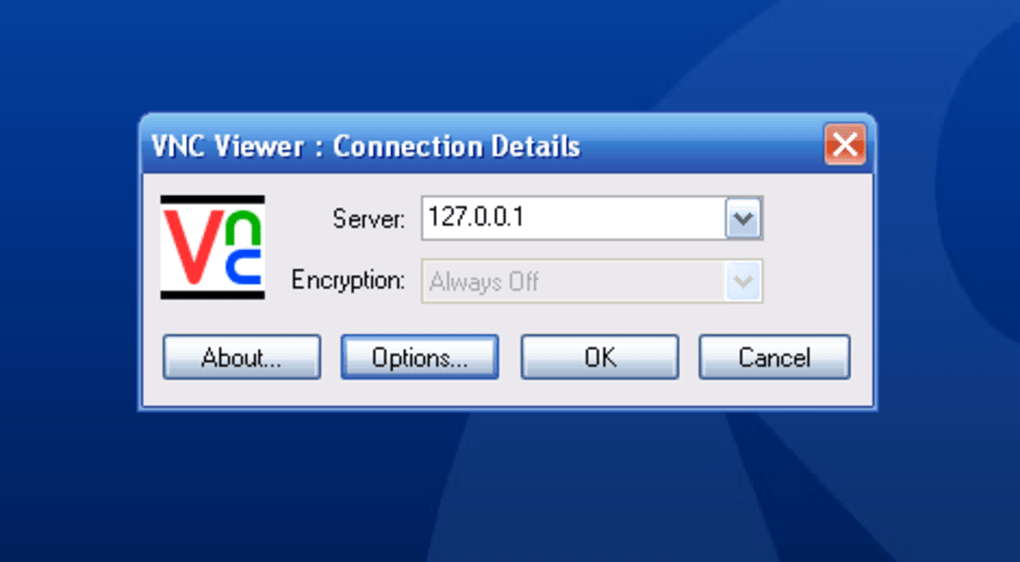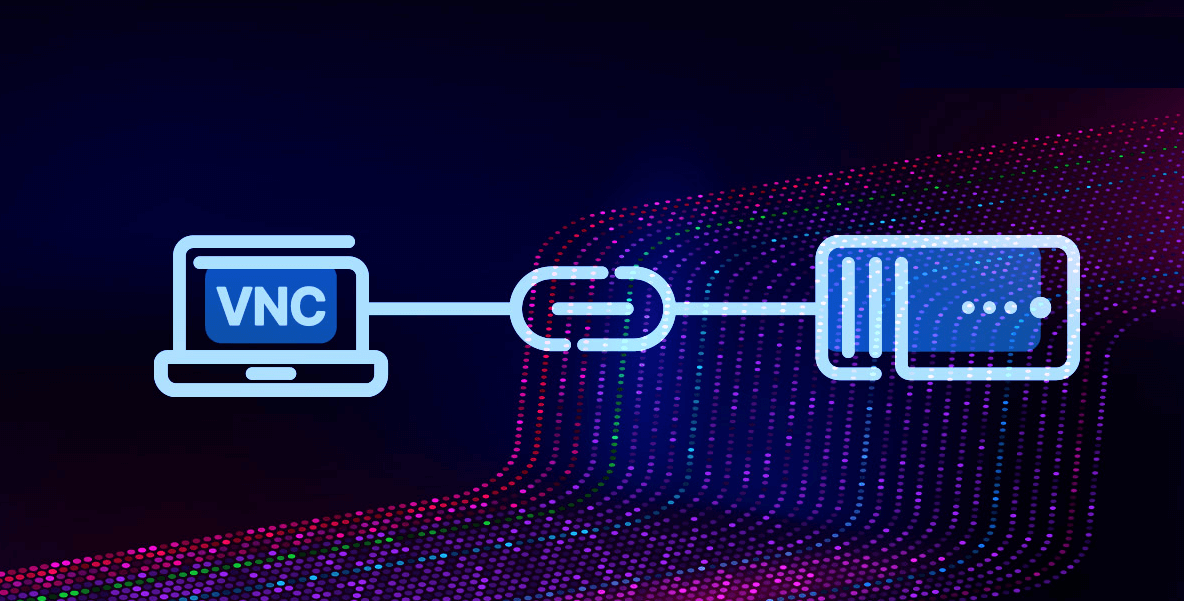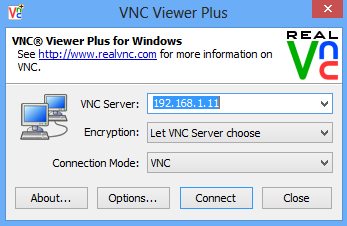VNC Pi Over Internet - Your Raspberry, Anywhere, Anytime
Have you ever wished you could sit at your main computer and control another device, maybe a little Raspberry Pi, that’s tucked away in a different room or even miles away? It’s a pretty common thought, especially for those who have a few of these small computers doing various jobs. The idea of reaching out and taking charge of your Raspberry Pi’s desktop, seeing exactly what it’s doing, and moving your mouse around as if you were right there, is really appealing. This kind of remote access opens up a lot of possibilities, letting you manage things without having to physically connect a monitor, keyboard, or mouse to each one.
This capability, which allows you to view and interact with a computer’s screen from a different location, is often handled by something called VNC, or Virtual Network Computing. It’s a way to essentially stream the desktop of one machine to another, giving you full control. For anyone using a Raspberry Pi, this means you can set it up in one spot and then access it from your laptop in the living room, your phone while you’re out, or even a computer at a friend’s house, so, it's almost like magic.
Getting this kind of remote connection working smoothly, particularly when you want to access your Raspberry Pi over the vast reaches of the internet, can sometimes feel like a puzzle with many pieces. There are various tools people use, little tricks they learn, and common questions that pop up along the way. This discussion will walk you through some of the aspects of setting up and using VNC for your Raspberry Pi, touching on how people manage their connections, what mobile apps might help, and even some of the more advanced features or challenges you might come across, just a little bit.
- Welcoming The Joy Dave Grohls New Daughter
- Discovering The World Of Plies Rapper A Journey Through His Life And Music
- Taylor Swift Sightings Unraveling The Mystery Of Her Public Appearances
- Penn Badgley A Deep Dive Into His Relationships
- Unveiling The Legacy Of The American Singer Prince
Table of Contents
- What is VNC and Why Use It for Your Raspberry Pi?
- How Can I Manage My VNC Connections for My Raspberry Pi?
- Are There Android Clients for VNC Pi Over Internet?
- Setting Up Your VNC Server on Raspberry Pi
- Scripting Your VNC Pi Over Internet Setup
- Common Questions and Getting Help for VNC Pi Over Internet
- Considering Sound for Your VNC Pi Over Internet Experience
- Tackling Connection Quirks and Future Improvements for VNC Pi Over Internet
What is VNC and Why Use It for Your Raspberry Pi?
VNC, at its core, provides a visual link to another computer. Think of it as having a window on your screen that shows you exactly what’s happening on your Raspberry Pi’s display, no matter where that Pi is physically located. You get to see its desktop, open programs, move files around, and type things, all from your own computer. It's a very handy way to interact with your Pi without needing to plug in a screen or keyboard directly to it. This is particularly useful if your Raspberry Pi is tucked away in a corner, maybe running a server, controlling some smart home devices, or perhaps acting as a media center. So, for many people, VNC is the go-to method for keeping an eye on their little computer without being right next to it.
The main reason to use VNC for your Raspberry Pi, especially when you want to reach it over the internet, comes down to convenience and flexibility. Imagine you’re at work, and you suddenly remember you need to adjust something on your home automation system, which runs on your Pi. Instead of rushing home, you could just open a VNC client on your work computer, connect to your Pi, and make the changes. It’s a bit like having a remote control for your entire Raspberry Pi desktop. This means your Pi can be placed in less accessible spots, like a server closet or a shed, and still be fully manageable. You know, it really makes things simpler, more or less.
How Can I Manage My VNC Connections for My Raspberry Pi?
When you start connecting to multiple Raspberry Pi devices, or even just one from different places, keeping track of all your VNC connections can become a little bit of a task. Many people find themselves needing a good way to organize these remote links. There are tools out there that help you manage multiple "viewer" files, often saved as `.vnc` files. These files are like small configuration notes that tell your VNC viewer how to connect to a specific remote machine. You might use something like `Vncviewer.exe` or `vnc_launch.exe` to open these files. The key thing is that these `.vnc` files need to be kept in a place where your VNC program can find them easily, so, you can just click and connect without having to type in all the details every time.
- Exploring The Magic Of Bluey Ep A Deep Dive Into The Beloved Australian Series
- Zahn Mcclarnon A Multifaceted Talent In Entertainment
- Unveiling The Legacy Of The Sopranos A Deep Dive Into The Iconic Series
- Unveiling The Enigma George Clooneys Wife
- Tom Wopat A Multifaceted Talent In Entertainment
One specific tool that someone created because they couldn't find anything similar is called "Vnc address book." It’s an open-source program, which means its code is freely available for anyone to look at or even improve. This tool is designed to help you manage your `Ultravnc` connections, and it relies on those same `.vnc` files. The person who developed it did so out of a personal need, just a little bit, which is often how useful tools come about. It helps centralize all your connection details, making it much easier to jump between different Raspberry Pi setups or other computers you might be managing remotely. It’s a pretty neat way to keep things tidy, actually.
Are There Android Clients for VNC Pi Over Internet?
Yes, absolutely! If you're looking to access your Raspberry Pi from a mobile device, particularly an Android phone or tablet, you're in luck. Many people have found good success with various VNC client applications available for Android. One that often gets mentioned in discussions is called `avnc`. It seems to work really well with `Ultravnc`, which is a popular VNC server application that you might have running on your Raspberry Pi. This particular client is also open source, which means it's been developed by the community, and its code is transparent. Apparently, it’s known for rendering the remote screen quite quickly on your mobile device, which is a big plus when you’re trying to do things like browse files or type commands on your tiny screen, so, it's quite efficient.
Having a reliable Android VNC client for VNC Pi over internet access means you’re not tied to a desktop computer to manage your Raspberry Pi. You could be on the go, perhaps away from home, and still have the ability to check on your projects, restart a service, or just ensure everything is running as it should. This level of flexibility is incredibly valuable for anyone who relies on their Raspberry Pi for various tasks. It’s pretty convenient to just pull out your phone and have full control, in a way, of your remote system, whenever and wherever you need it.
Setting Up Your VNC Server on Raspberry Pi
Getting a VNC server running on your Raspberry Pi is the first major step to enabling remote access. This involves installing the necessary software on the Pi itself, which will then allow it to share its screen. The process typically includes a few steps, such as updating your system, installing the VNC server package, and then configuring it to start when your Pi boots up. You'll also need to set a password for your VNC connection, which is a pretty important security measure. This password is what you’ll use from your client device to gain access to the Pi’s desktop, so, it's almost like a key to your remote computer.
Once the VNC server is installed and running, you'll need to think about how your Raspberry Pi is connected to the internet. For VNC Pi over internet access, this usually means setting up port forwarding on your home router, or using a more advanced method like a VPN, to allow incoming connections to your Pi. This part can be a little tricky for some people, as it involves network settings. However, there are many guides available that walk you through these steps specifically for Raspberry Pi, helping you make sure your connection is both accessible and secure. You know, it really helps to have a clear path to follow.
Scripting Your VNC Pi Over Internet Setup
Automating tasks is a big part of working with Raspberry Pi, and setting up a VNC server is no exception. If you find yourself installing VNC on multiple Pi devices, or even reinstalling it on one, doing it manually every time can become a bit tedious. This is where creating a script comes in handy. A script is essentially a list of commands that your Raspberry Pi can run automatically. For example, you might want a script that only installs the VNC server software, then makes sure it registers itself as a service so it starts automatically in the background, and finally, prompts you to set a secure password. People often share these kinds of scripts online, which can be a real time-saver. So, if you need to create a script for your VNC Pi over internet setup, chances are someone has already put together something similar that you can adapt, more or less.
Having a script for your VNC setup means consistency and speed. You can be sure that every Raspberry Pi you configure will have the VNC server set up in exactly the same way, reducing the chances of errors. It also means you can get a new Pi up and running with remote access much faster. You just run the script, answer a few prompts, and you're good to go. This approach is particularly useful for those who manage several Raspberry Pi devices for different projects, making the initial setup much less of a chore. It’s a pretty efficient way to work, actually.
Common Questions and Getting Help for VNC Pi Over Internet
When you're trying to get something as intricate as VNC Pi over internet access working, it's very natural to run into questions. Sometimes these are general questions that many people have, like "How do I make my VNC connection faster?" or "What's the best way to secure my remote access?" Other times, your questions might be very specific to your unique setup or a particular issue you're facing. The good news is that there are many places where you can find help. Online forums, community groups, and documentation pages often have sections dedicated to frequently asked questions, and they also provide avenues for you to ask your own specific questions. You know, it’s good to have resources to lean on.
One of the more common issues people sometimes encounter relates to connection settings, like color depth. For instance, someone might set their `.vnc` file to use only 8 colors, which helps save network bandwidth, especially over a slower internet connection. However, when they connect to a new server, it might still show everything in full color. This can be a bit confusing, as it seems to ignore the saved settings. Apparently, even trying an older version of the software, like `1.5.0.3`, might not resolve this particular quirk. These kinds of inconsistencies are often discussed in help forums, and sometimes, a simple clarification from someone with more experience can shed light on why something is behaving in an unexpected way. It’s just one of those things, typically, that requires a bit of troubleshooting.
Considering Sound for Your VNC Pi Over Internet Experience
A feature that often comes up in discussions about VNC, especially when you're using your Raspberry Pi for things like media playback or remote monitoring that involves audio, is sound support. Many people find that having sound transmitted over their VNC connection would be incredibly useful. It seems that most of the VNC programs that you pay for, the commercial ones, generally include sound transmission as a standard feature. This makes some users of the free, open-source VNC tools wonder if there's a way to get this functionality. For some, having sound isn't just a nice extra; it's a necessary part of their remote computing experience. So, there's often a conversation about whether a group of people would be willing to contribute money to help developers add this sound feature to open-source VNC projects, too.
The desire for sound support highlights a common gap between free and paid software. While the core functionality of VNC—remote desktop viewing and control—is often excellent in open-source options, certain advanced features like sound might be missing. For someone relying on their Raspberry Pi for a home entertainment system or a security camera setup with audio, the lack of sound over VNC can be a real limitation. It’s a feature that genuinely enhances the remote experience, making it feel more complete and immersive. You know, it’s something many would genuinely appreciate, in a way.
Tackling Connection Quirks and Future Improvements for VNC Pi Over Internet
As with any technology, there are sometimes advanced setups or particular behaviors that can be a bit puzzling. For example, people often discuss "reverse connections," where instead of your client connecting to the server, the server initiates the connection back to your client. There was a particular discussion about using DNS, which helps translate web addresses into network locations, to figure out the type of connection method to use for these reverse links. This idea gave some folks hope for a smoother way to establish these connections. However, it didn't always work out exactly as expected, which can be a little frustrating. These kinds of specific technical details are often where community knowledge and shared experiences become really valuable, so, it's good to talk about them.
Looking ahead, there are always efforts to make VNC connections better, especially for VNC Pi over internet use where network conditions can vary. One area of development that some people are actively working on is implementing a different way of sending data, known as UDP transport, within `Ultravnc`. The usual way VNC sends data is through TCP, which is very reliable but can sometimes feel a bit slower, especially over long distances or less stable internet connections. The idea behind using UDP is to make the connection feel faster and more responsive, which could be a big improvement for remote desktop experiences. Their thought is to adapt the existing TCP connection method to work with UDP, potentially leading to a smoother and quicker interaction with your Raspberry Pi from anywhere. It’s a pretty exciting prospect, actually, for anyone who uses VNC a lot.
This discussion has touched on various aspects of using VNC for your Raspberry Pi over the internet, from managing your connections and finding suitable Android clients to understanding server setup scripts and tackling common issues like sound support or connection quirks. It's clear that while VNC offers a powerful way to access your Raspberry Pi remotely, there are many tools, community insights, and ongoing developments that contribute to making the experience smoother and more effective for everyone.
- Unveiling The Life And Career Of Melissa Roxburgh
- Unraveling The Connection Between Jason Momoa And Johnny Depp
- Unveiling The Life And Journey Of Justin Biebwr
- Bubba Strait The Journey Of A Country Music Sensation
- Unveiling The Talent Behind Alex Dunphy In Modern Family

Five Apps For Vnc Remote Desktop Access On Windows

VNC What is? - VNC Remote Access Technology Full Explained

Five Apps for VNC Remote Desktop Access on Windows | TechRepublic